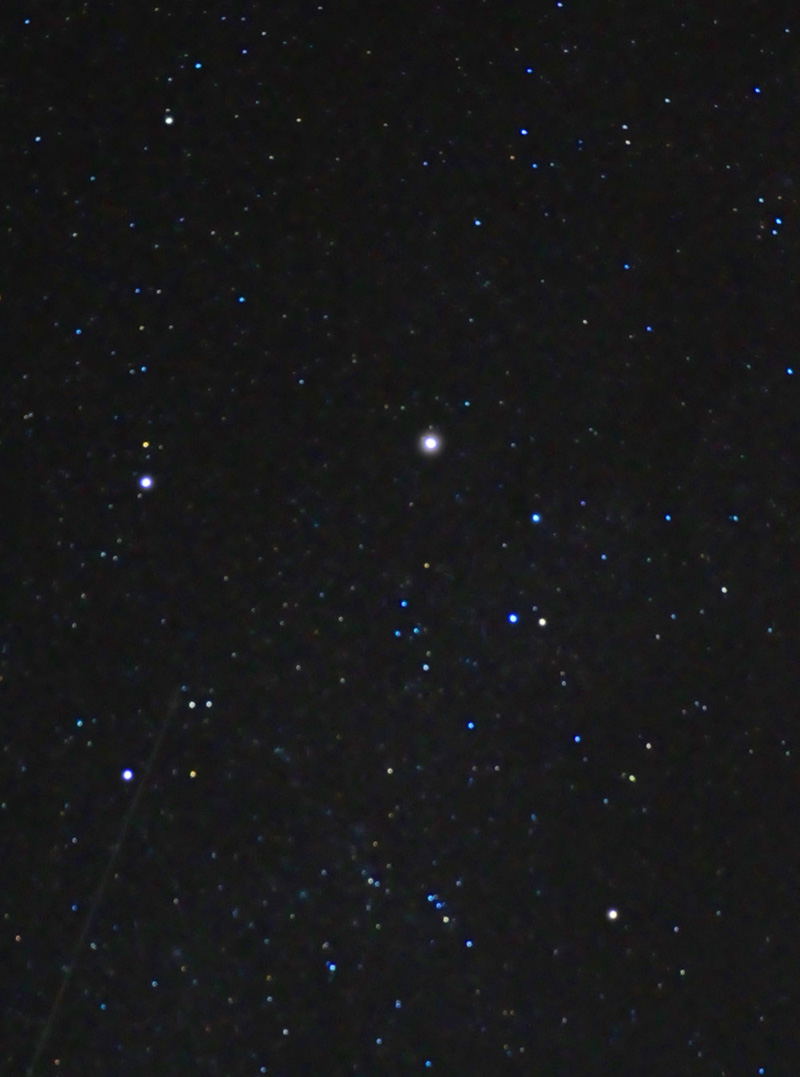Auriga
Auriga, popularly known as the Charioteer, is a prominent constellation far enough north that it can be seen on any night of the year if the observer is willing to set his or her alarm clock. But the best times to see this constellation are in the mid-winter when it is high in the sky. The brightest star in Auriga, at the top of the nose, is brilliant Capella, a relatively close quadruple system, consisting of two giant stars each about 80 times as bright as our sun orbiting each other at a distance of about 60 million miles, and a much more distant pair of red dwarfs. These two primary stars have left the main sequence and are moving toward the red giant phase; one is believed to have already begun fusing helium. Alnath, the star forming the protruding chin of the Charioteer actually sits almost precisely on the border with Taurus and is often referred to as Beta Tauri, the second brightest star in The Bull. Alnath is actually much brighter than Capella, being about 700 times the luminosity of our sun but seems dimmer due to the fact that it is 3 times as distant. This star has also run out of hydrogen in the core and is moving toward the red giant phase of its life. The star Menkalinan is a triple system, consisting of two close sub-giants which eclipse each other every 48 hours as they revolve, and the third member is a red dwarf some 30 billion miles away. Auriga is the home of two prominent emission nebulae north of Alnath which can be seen on long exposure photographs. A faint meteor or satellite track can be seen in the lower left part of this image.
 |